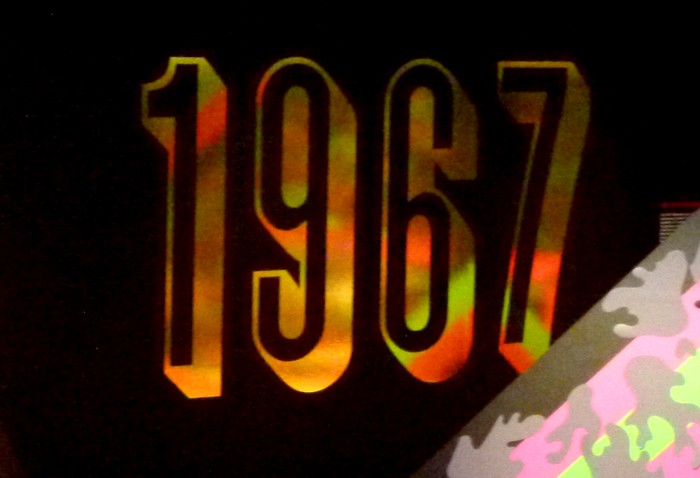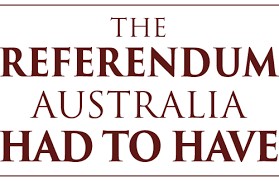1967 is in the news this week as it is 50 years since one of the few referendums, since the Federation of Australia in 1901, to successfully lead to an amendment to our Constitution. In this case it was to remove references to 'aboriginal natives' and 'aboriginal people'.
It has been widely claimed that these changes enabled Aboriginal Australians to vote for the first time but this is nonsense.
Yet it was ground breaking in other ways.
Of forty-four attempts to alter the constitution only eight have succeeded. So profound has been the lack of success before and since that governments seldom attempt it anymore. It's not so much that Australians love the present document as that they don't trust the motives of those politicians who want to change it. "On the whole," they always argue, "the country isn't doing too badly with the Constitution we've got so if it ain't broke don't fix it".
In 1967 I was at last able to vote. I had turned 21 the year before and couldn't vote before that. 18 year olds would not get a vote until 1973. So I was very keen to understand and address the issues, principal among which was breaking the 'Nexus': the proposal to to allow an increase in the number of Members of the House of Representatives without necessarily increasing the number of Senators. Despite my support this amendment was lost. Thus today the Senate grows inexorably, as does the number of weirdos inhabiting that place.
The other issue, that by that time was a fait accompli, was to remove of sections of the Constitution relating to Aboriginal Australians, thus enabling the Commonwealth to enact laws for Aboriginal people, as they do for everyone else. This required repealing section 51 (xxvi) prohibiting the Commonwealth from making laws with respect to aboriginal natives:
51. The Parliament shall, subject to this Constitution, have power to make laws for the peace, order, and good government of the Commonwealth with respect to:-
...(xxvi) The people of any race, other than the aboriginal people in any State, for whom it is necessary to make special laws.
And to remove the prohibition against counting Aboriginal people in population counts in the Commonwealth or a State by repealing section 127:
127. In reckoning the numbers of the people of the Commonwealth, or of a State or other part of the Commonwealth, aboriginal natives should not be counted.
It was explained that these provisions had been intended by the 'founding fathers', of those first Australian Constitutional Conventions (1891 and 1897-98), to apply to full-blood aborigines who were still living 'on country' back then.
But in swinging 1967 this was now seen to be both racist and ambiguous.
 Graphic from the exhibition at the National Gallery of Australia - Canberra
Graphic from the exhibition at the National Gallery of Australia - Canberra
As in the case of 'mixed race' people everywhere it was no longer clear to which race they belonged and therefore who was a real 'aboriginal person'. This became increasingly controversial in the 1960's and 70's and had to be sorted out. See: Defining Aboriginality in Australia (Parliament of Australia - Current Issues Brief no. 10 2002-03)
Today Aboriginality is not defined not by genes or colour but by heritage and self-identification:
| Many people still believe it’s about blood percentages, using terms based in Western scientific tradition such as “half-caste” and “quadroon”. Some have even expressed the view that if we are not at least half-Aboriginal we have no authority to speak, create, live or identify as Indigenous people. This is not true. Considering Aboriginality in that way is highly offensive to Indigenous Australians who identify as such... Indigenous Australians developed a working definition which was then adopted by the Australian Government, to define an Aboriginal or Torres Strait Islander person as:
Source: Australian Museum 2017 *Note that the last condition is circular and logically meaningless. The definition of 'Aboriginal community' obviously depends on the definition of an Aboriginal or Torres Strait Islander person, that in turn depends on the definition of 'Aboriginal community'. |
Like over 90% of my fellow voters I also supported the proposed Constitutional changes but not to: '...give Aborigines the vote'.
Like all informed voters I knew perfectly well that Aboriginal people had been able to voluntarily enrol to vote long before this Referendum. And no one was able to produce an example of any 'mixed race' person who had ever been refused enrolment. In particular, mixed race members of the 'Stolen Generation', brought up in European households, not to mention 'mixed race' kids I had been to school with, were considered to be integrated and were enrolled like everyone else as a matter of course.
As early as 1949 unambiguously Aboriginal people who had fought for Australia were formally given the vote and this was applied more generally in several States (and thus under the Constitution in Federal elections too). In 1962 the Commonwealth Electoral Act had formally given all Aboriginal people 'the option' of enrolling to vote in Federal elections.
But by removing the prohibition on making of laws on their behalf an amendment to the Electoral Act was enabled, henceforth removing 'the option' and making voting compulsory for Aboriginal Australians, in common with other Australians.
And that was the crux of my support. I wanted all children born in Australia and adults electing to give their allegiance to Australia to be treated the exactly same under the Constitution. I wanted every Australian to enjoy the same civil rights and privileges - and to be burdened with the same civic responsibilities. I wanted an end to discrimination. I wanted and end to segregation. I wanted an end to racial and religious intolerance.
Like others of my generation, who voted overwhelming for it, I continue to applaud that historic constitutional change, half a century ago, that gave the Commonwealth the ability to make special laws in support of all Australians who are disadvantaged. It was essential that henceforth this should encompass those who identified as Aboriginal Australians.
Yet I firmly believe that in a modern secular society it is in no one's long term interest to be singled out on the largely spurious basis of 'race'.
This is why I absolutely reject reinserting any reference to the 'Aboriginal People', or any other race or religion, in the Australian Constitution and will vociferously oppose any attempt to do so.

